"Keep it simple” is a mantra often recited by many a fly fisher but rarely actually practiced. Let's face it, most anglers love collecting stuff and lots of it. In particular, fly patterns have long been a desired object to tie and or/collect. As I continue to travel more and meet new fly fishers- fly patterns are often the focus point of our discussions.
You can never have enough flies is what many say, but is there such a thing as too many flies? As a recovering fly hoarder, I can say without certainty that yes, you can have too many flies.
These days, I’m trying practice minimalism with all aspects of my life, including my fly fishing gear. This means trying to reduce all excess and keep only the items that are essential for living and for fishing.
For years, I would carry several thousands flies with me at any given time. I would have at least 20 of each of my favorite patterns, covering almost every conceivable situation an angler might encounter. I would even carry match the hatch style nymphs for insects that were no longer relevant at the time of year I was fishing. I was scared that that I might encounter some freak occurrence where I needed a specific pattern.
But guess what? I can recall maybe four times during the last 15 years I needed that oddball pattern (e.g. green drake nymph two months after the hatch). So these days I carry a dirty dozen of nymph patterns that leave me comfortable fishing anywhere/anytime.
What you’ll notice with this dirty dozen is that these are all generic nymphs — patterns that can imitate a wide range of insects. Instead of trying to perfectly match each hatch, I use patterns that can imitate several insect species. This streamlining has dramatically reduced the number of patterns I carry with me. And has allowed for a more organized set of boxes. Now I know exactly what flies I’m carrying along with the quantities.
I try to carry approximately 6 of each nymph as it is not uncommon to loose 6 nymphs during a day’s outing. Lately, I’ve purchased fly boxes with at least a dozen rows. Then I fill each of the 12 rows with each of the dirty dozen nymphs in quantities ranging from 6-12 each. So if you decide to carry a minimum of 6 for each of the dirty dozen, then you’ll carry around 72 flies. And 72 flies is a practical and manageable number of nymph patterns to work with. So without any further delay, here’s my dirty dozen nymphs I carry at all times.
Cannon’s Worm (Red)
No fly box would be complete without a worm pattern. Worms will work anytime but tend to work better when the water is a touch off color. Andy don’t worry about the purist that calls you a “worm fisher.” They’re just made that your rod is constantly bent over with a fish on.

Frenchie
The Frenchie is essentially a beadhead pheasant tail pattern with a dubbing hot spot. Some anglers will argue that the hot spot represents an egg while others claim it’s simply a color trigger. Whatever the reason, one thing is for sure: this pattern is likely to turn the feeding mechanism of any lethargic fish.

Gold-Ribbed Hare’s Ear
A classic nymph that will continue to be around for a long time and for good reason. The Hare’s Ear is a generic mayfly nymph. Something about the gold ribbing in combination with the rabbit fur makes this one of the most essential patterns to have.

Guide’s Choice Hare’s Ear
For when insects are hatching and trout are focusing on the emerging insects, why not alter one of the best nymphs (Hare’s Ear) into an emerger pattern? That’s exactly what the Guide’s Choice Hare’s Ear pattern is: a generic emerging insect pattern. Also, make sure to fish this fly on the swing!

Iron Lotus
The Iron Lotus is another generic nymph constructed of a thread body nymph coasted with nail polish. This creates a hard body that sinks like a rock. When you need a good-looking nymphing pattern that can sink quickly in a pocket, the Iron Lotus is the first fly I reach for.

McKee’s Rubber Legs Yellow and Brown
Stonefly nymphs are large, meaty meals trout will chase down. Anytime you find yourself in a large freestone river, pick up a few rocks. If you notice stoneflies crawling on the rocks, I would highly suggest tying on this large rubber leg nymph.

Prince Nymph
If you look take the time to look at the aquatic insects within the waters you fish, you’ll notice that most have contrasting color schemes. For example, many will have a light colored bottom with a dark top. While the white biots along the prince nymph may not represent any specific aquatic insect, this highly contrasting nymph has proven to be one of the most productive patterns of all time.

Rainbow Warrior
This is what many would call an attractor pattern —a flashy pattern designed to get a trout’s attention. When natural looking nymphs don’t seem to work, it’s time to use a pattern similar to the Rainbow Warrior. The Warrior was developed by a friend of mine, Lance Egan, who has used this pattern to catch fish across the globe during his travels with Fly Fishing Team USA. If someone with the skills of Lance Egan keeps this attractor fly in his box, I would suggest you do as well.

Ray Charles Gray
Cressbugs are often found in tailwaters and trout will gorge themselves with these tiny morsels. Cressbugs looks like a pill bug, but in an aquatic form. The Ray Charles was originally designed for western tailwaters but I’ve found it to work anywhere cressbugs are present.

RS-2 Emerger
When selective trout are keying on tiny mayfly emergers, you need the RS-2. This simple and suggestive mayfly emerger can imitate anything from blue wing olives to pale morning duns.

Super Pupa Olive
Caddis are found in virtually all trout streams. The Super Pupa can be fished as both a larva and pupa stage. If you find yourself along unfamiliar waters and don’t know what to fish, a caddis is often my first choice. This lifelike yet suggestive caddis pattern has been my number one caddis nymph over the last several seasons.

Mayer’s Tungsten Tube Midge
While I don’t believe you need to necessarily “match the hatch” an angler does need to find a pattern that has a size and shape close to the naturals the fish are feeding on, especially when trout are feeding on midge larva. While I’ve only been fishing this pattern for a few months, the Mayer Tungsten Tube Midge has been nothing but a stellar addition to my fishing.






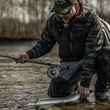
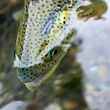









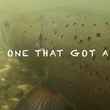
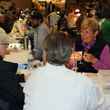



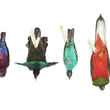




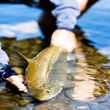
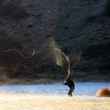


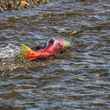
Comments
Simon Zlachevsky replied on Permalink
What happen with the old and trusted Pheasant Tail nymph?
Alex replied on Permalink
Agree. Even when you need some weight to get down, I find a PT does the trick on point. Let’s face it, it’s the parachute Adams of nymphs.
Zach Lazzari replied on Permalink
Nice list. I love the Frenchie. So simple and effective.
Paul Pavlik replied on Permalink
George: Great article on keeping one's nymph boxes to a reasonable number. Question: You note quantities of 6-12 of each of the nymphs indicated. I'm in Colorado. What sizes should I be carrying of each of the 6-12 nymph patterns? Thanks, Paul
Anonymous replied on Permalink
Depending on the time of year as to how big/small most nymphs are. Flip a few rocks and see what you come up with, as far as size.
If it's during the coldest months, then, I'd stay small to very small, say, #16-24 or smaller.
I usually skip a size, to keep my assorted box smaller (16, 20, 24) this give's me a variety, and close enough in size to work well. It's usually better to go smaller than too big, after-all everything starts out small.
Good luck and I hope this helps.
BOB replied on Permalink
I would add a size 10/12 tan/brown emerger or wet fly......I catch more fish on these, than all other combined.....
George J F replied on Permalink
This is a great list. I have all but two of these in my fly box already, so I just need to add those and wean off of the others!
Also, skipping sizes makes so much sense, not only does it save space, it should save a heck of a lot of time at the tying vise!!!
I was surprised not to see a Pheasant tail on the list but I'll keep that as a wildcard!
Will you be writing a similar article for dry flies?
Thanks for the great info / tips!
Pages